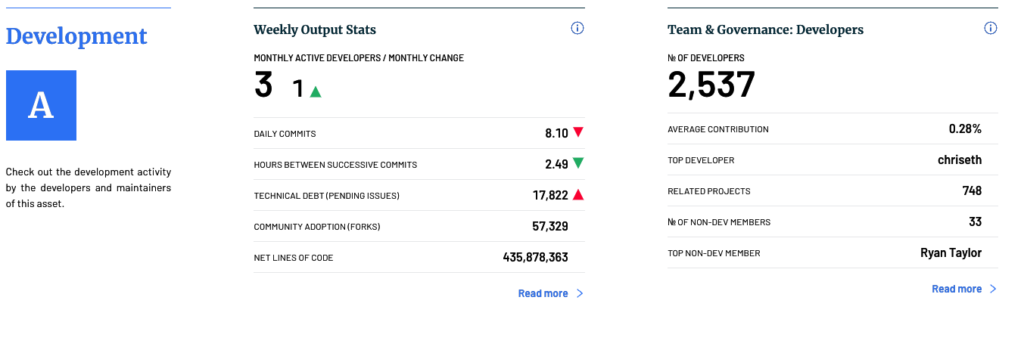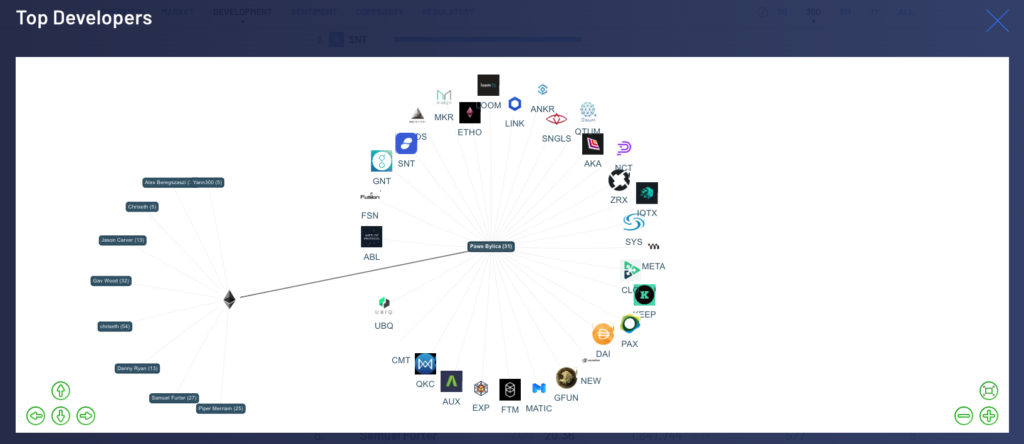Case study
During 2017, in the high days of ICOs and the capital raise rush, I designed and created an index rating solution (under Blue-Swan.io, now focused on DeFi). The core idea was combining quantitative and qualitative methodology to rate digital assets (blockchain tokens, cryptocurrencies).
The underlying hypothesis was to gather structured relationship data from participants on an asset and understand how strong these bonds were. Also, in contribution terms, projects can be measured with fundamentals very differently compared to economic ratios on brick and mortar or other technology companies.

The index service was offering increased transparency to the large amount of new assets, who were the developers working on them, who were the VCs and Investors funding them and in which jurisdictions (countries and their monetary authorities) the market was located.

Not only the service triggered a vast amount of interest in the community, the sentiment analysis drew light on how particular projects where using social media and crypto news channels to boost attention and momentum.
At the same time, combining data from regulatory bodies in multiple jurisdictions and various countries provided insights regarding the variety of leniency across countries. At first, both good agents and bad actors were involved, but it foremost the interconnections of actors, projects behind the assets and the impact these had on the market were revealed.

Regulatory arbitration was also present, with few projects selecting countries with non existing rules or weak or grey line definition.
Sentiment analysis on news outlets provided clear “swing” indicators and how the momentum of certain assets was evolving, and leading/lagging indicators were extracted from these new metrics.
Conclusion
Data aggregation, consolidation and presentation for alternative views on new assets revealed important information not apparent. New perspectives of the dynamics how these projects evolve over time provides additional context on the dynamics of a nascent asset class. Revealing the relationships between individuals, investors and assets exposes how the orchestration of actions and market appeal interact.